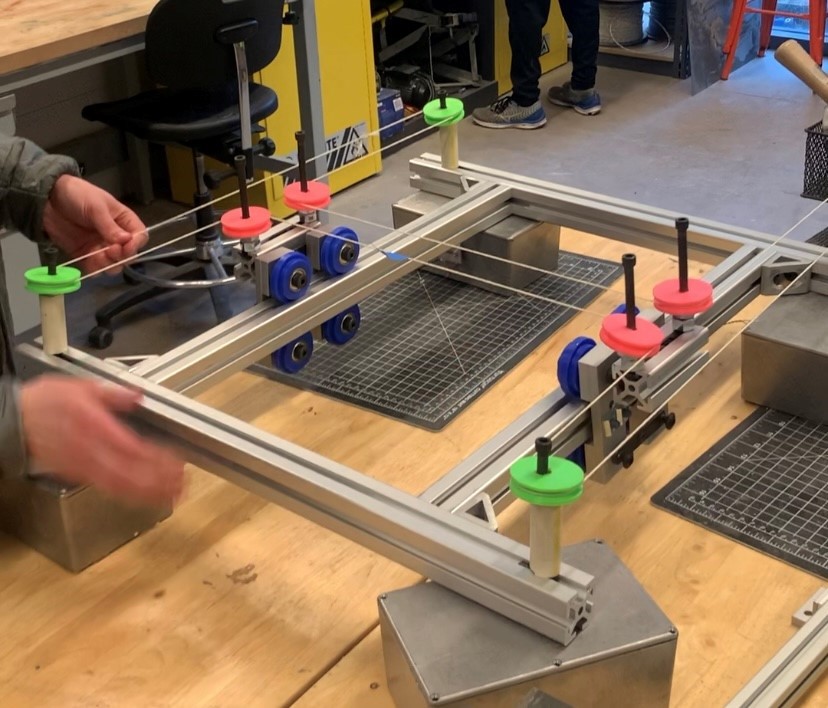Active Gravity Offload Rig for Rover Testing
Overview
Our team was tasked with creating a gravity offload rig capable of simulating lunar gravitational conditions for Lunar Outpost’s Mobile Autonomous Prospecting Platform (MAPP) rover. Previously, Lunar Outpost has tested their rovers under Earth’s gravitational conditions, 83% higher than the moon’s gravity. Our active gravity offload system (AGOS) provides Lunar Outpost with a more effective and accurate testing process.
Additionally, the team was tasked with redesigning and building an expanded version of the existing lunar testbed at the Mines Center for Space Resources. The testbed is more than double the original size, with the fully integrated AGOS acting over 2/3 of the testbed and 160 ft2. To simulate lunar gravity, a constant vertical force is applied to the rover through a cable. A load cell measures cable tension, which is adjusted as needed by the vertical motor. The AGOS attaches to the rover via a gimbal, which stays directly above the rover’s center of mass using a three-pulley system. An overhead gantry system tracks and follows rover movement, with an angle sensor detecting the angle of the cable and converting it to change in displacement. The AGOS follows the rover using feedback loops and an H-Bot system with two fixed brushless motors and limit switches in place. Our design is the only one of its kind and allows more meaningful rover testing.
Team Members
-
Danielle Mullen
-
Emily Rago
-
Sydney Purdom
-
Cole Binder
-
Max Kowalczyk
-
Henry Mizer
-
Jeffrey Hostetter
-
Benjamin Linehan
The Client
- Peter Wilson, Lunar Outpost
- Colby Moxham, Lunar Outpost
- Angel Abbud-Madrid, PhD, Center for Space Resources
Acknowledgements
Project Advisors: Donna Bodeau, Oyvind Nilsen, PhD, Darren McSweeney, and Jeffrey Ackerman, PhD
Donations Made by: Lunar Outpost and Center for Space Resources


